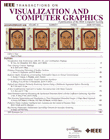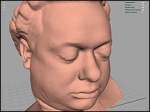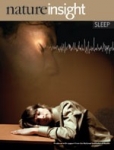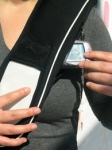Nov 19, 2005
The Promise of eTherapy

17:35 Posted in Positive Technology events | Permalink | Comments (0) | Tags: Positive Technology, cyberterapy
Job Opening: Research Assistant in the project Augmented Reality & Pervasive Computing Lab
(thanks Regine)
From the Augmented Reality & Pervasive Computing Lab (Universität Graz) web site:
Technische Universität Graz (TUG), Austria, invites applications for open research positions in the project Augmented Reality & Pervasive Computing Lab, aiming at the development of mobile augmented reality, wireless information systems, and ubiquitous computing infrastructures. This program is funded in part by theAustrian Ministry of Science (bm:bwk), the Austrian Science Funds, and the IST program of the EC. More details on the project are given in the summary below. We are looking for a candidate having some or most of the following qualifications:
- University degree, preferably MS (Diplom, DEA, or equivalent) in computer science, mathematics or related field; plus the intent to pursue a PhD at TUG or in collaboration with the candidate's home institute. Alternatively, we are also inviting applications from postdocs who are interested in continuing scientific work. Compensation will be based on qualification.
- Strong interest in research on virtual environments, augmented reality, humancomputer interaction, real-time graphics, and pervasive computing infrastructures. Some background in computer graphics, multimedia or networking is expected.
- Considerable experience with software development methodology and tools, in particular object-oriented programming, C++, OpenGL, Open Inventor, XML, MS Windows, Linux. Prior involvement in research or development projects is a plus.
- Fluency in English, good communication skills and capability of working in teams complete the profile of a successful candidate. Note that knowledge of German is not expected (but this may be your chance to learn it! :-). What do we offer in exchange:
- The opportunity of pursuing a funded PhD/research position in an exciting new field
- A lot of freedom to explore both your scientific and creative interests in the course of your work
- A very good working climate
- A chance to live in the beautiful city of Graz
Project Summary
In our everyday world we are not limited to our computer desktop. Information in the real world is perceived and processed in three dimensions, continuously and in real time. A human-computer interface that can capture these properties will be able to render a new level of services to the user, enabling the use of computers for new application domains and for new user populations. This „anywhere" and „anytime" requirement for pervasive computing cannot be fulfilled with miniature versions of desktop environments, such as provided by the ubiquitous cell phones, nor can it be realized by putting web kiosks around every corner. Therefore, what kind of user interface style can provide these radically different properties for the years to come?
The core of the proposed research is the following thesis: Augmented reality (AR), i. e., enhancing a user‘s perception of the real world with computer generated elements (e. g., explanations), can make working with computers in 3D as productive as the desktop metaphor in 2D. This thesis is motivated by the fact that AR allows to integrate the whole world into the interface – the world essentially becomes the interface. Therefore users are able to leave their physical desktops and computer desktops to interact with their environment and with other users. The AR platform Studierstube lead by the proposer is world-wide unique in its combination of augmented reality, 3D display and groupware elements. The proposed program work will expand the augmented reality platform Studierstube into a pervasive computing environment built on a variety emerging technologies.
Some important building blocks of this of this infrastructure are:
- Wearable computer with 3D augmented reality display
- Wireless spontaneous communication: among worn components, with the environment, with other users, indoors and outdoors
- Exact position tracking indoors and outdoors
- Integration into the environment, e. g., spontaneous usage of situated displays and devices
- Scalable situated multi-user displays based on inexpensive PC clusters and projectors.
A number of promising application areas is selected, for which applications will be developed that try out the new style of interfacing with the computer in practice:
- Navigation and guidance systems
- Tourist information systerms
- Building, campus, and office information systems
- Maintainence and repair support
- Planning, surveying and construction
If you think about applying, send a letter including curriculum vitae and publications list (preferable by email) to: Dr. Dieter Schmalstieg, schmalstieg@icg.tu-graz.ac.at
17:23 Posted in Research institutions & funding opportunities | Permalink | Comments (0) | Tags: Positive Technology
Nov 18, 2005
Gaming for Behavior Change and Performance Enhancement
Via VR-PSYCH List
SUMMIT is holding its 4th Workshop on Games for Behavior Change and Performance Enhancement. Keynote speakers include: Mark & Brenda Wiederhold (San Diego), Barr Taylor (Stanford), Hunter Hoffman (University of Washington), and Mike Zyda (USC). The program includes a visit to the CyberTherapy clinic at The Virtual Reality Medical Center.

From the workshop web site:
Gaming for Behavior Change and Performance Enhancement – a workshop that demonstrates the exciting new possibilities for video games in the health care sector.
This workshop will be of interest to clinicians, scientist, psychologists, as well as educators and game developers.
Mark D. Wiederhold creator of “Cyber therapy,” keynotes the workshop on Sunday evening setting the stage for a full day of talks, interaction and group discussions:
-
Hunter Hoffman- The Originator and Developer of the concept of Virtual Reality for distraction as a pain therapy.
-
Barr Taylor- Developer of Virtual communities for risk reduction in teen eating disorders, smoking prevention and stress reduction in cancer survivors.
-
Michael Zyda- Developer of the wildly popular America’s Army Video Game.
-
Field trip to the unique Virtual Reality Medical Center, a cyber clinic of the future where participants will be introduced to simulators for Behavioral Change and Performance Enhancement.
09:07 Posted in Positive Technology events | Permalink | Comments (0) | Tags: Positive Technology
Nov 17, 2005
Video chat software turns users into live avatars
via the Presence Listserv
Oki Electric Industry Co. Ltd. has developed technology that can add animated faces to instant messaging, networked gaming, and other real-time communications used on mobile phones and PCs. Oki's "FaceCommunicator" software leverages technology similar to the company's face recognition software that recognizes handhelds' owners. The technology supports Linux-based mobile phones.
FaceCommunicator is touted as useful for maintaining privacy and security during first time "face-to-face" communications over video phones, mobile phones, or in IM or chat-room chats on the Internet. In addition, the facial animations let users express emotions that might be hard to express in words, Oki says.
The technology can take advantage of four sources of user input to generate and control its transmitted animated faces - video images from PC or mobile phone cameras; voice; text; and mouse/keyboard commands.
Both the animated face and a background image can be selected by the user to suit the need of the moment. Additionally, certain of the animated faces can move their eyebrows and mouths as though talking, which adds a virtual reality dimension to communications, according to Oki.

Read full article
14:55 Posted in Telepresence & virtual presence | Permalink | Comments (0) | Tags: Positive Technology, social presence
Nov 15, 2005
Meditation affects physical structure of the brain
Via Mind Hacks
A new study published in the journal NeuroReport has found evidence that meditation alters brain patterns. The MRI experiment involved 20 participants with extensive Insight meditation experience. Most of the brain regions identified to be changed through meditation were found in the right hemisphere, which is essential for sustaining attention.
Lazar SW, Kerr CE, Wasserman RH, Gray JR, Greve DN, Treadway MT, McGarvey M, Quinn BT, Dusek JA, Benson H, Rauch SL, Moore CI, Fischl B., Meditation experience is associated with increased cortical thickness. Neuroreport. 2005 Nov 28;16(17):1893-1897.
Abstract. Previous research indicates that long-term meditation practice is associated with altered resting electroencephalogram patterns, suggestive of long lasting changes in brain activity. We hypothesized that meditation practice might also be associated with changes in the brain's physical structure. Magnetic resonance imaging was used to assess cortical thickness in 20 participants with extensive Insight meditation experience, which involves focused attention to internal experiences. Brain regions associated with attention, interoception and sensory processing were thicker in meditation participants than matched controls, including the prefrontal cortex and right anterior insula. Between-group differences in prefrontal cortical thickness were most pronounced in older participants, suggesting that meditation might offset age-related cortical thinning. Finally, the thickness of two regions correlated with meditation experience. These data provide the first structural evidence for experience-dependent cortical plasticity associated with meditation practice.
23:20 Posted in Meditation & brain | Permalink | Comments (0) | Tags: Positive Technology, meditation
Nov 13, 2005
Development of a Virtual Reality System for the Rehabilitation of the Upper Limb After Stroke
Authors: Crosbie J, McDonough S, Lennon S, McNeill M
Virtual reality (VR) provides a three-dimensional computer representation of a real world or imaginary space through which a person can navigate and interact with objects to carry out specific tasks. One novel application of VR technology is in rehabilitation following stroke, particularly of the upper limb. This paper describes the development of a VR system for use in this field. This system gives the user the ability to interact with objects by touching, grasping and moving their upper limb.
21:25 Posted in Cybertherapy | Permalink | Comments (0) | Tags: Positive Technology, virtual reality
Nov 09, 2005
Special issue on haptics, virtual, and augmented reality - IEEE Trans Vis Comput Graph
Authors: Burdea GC, Lin MC, Ribarsky W, Watson B

10:19 Posted in Positive Technology events | Permalink | Comments (0) | Tags: Positive Technology
Real-time 3D human capture system for mixed-reality art and entertainment
Authors: Nguyen TH, Qui TC, Xu K, Cheok AD, Teo SL, Zhou Z, Mallawaarachchi A, Lee SP, Liu W, Teo HS, Thang le N, Li Y, Kato H
A real-time system for capturing humans in 3D and placing them into a mixed reality environment is presented in this paper. The subject is captured by nine cameras surrounding her. Looking through a head-mounted-display with a camera in front pointing at a marker, the user can see the 3D image of this subject overlaid onto a mixed reality scene. The 3D images of the subject viewed from this viewpoint are constructed using a robust and fast shape-from-silhouette algorithm. The paper also presents several techniques to produce good quality and speed up the whole system. The frame rate of our system is around 25 fps using only standard Intel processor-based personal computers. Besides a remote live 3D conferencing and collaborating system, we also describe an application of the system in art and entertainment, named Magic Land, which is a mixed reality environment where captured avatars of human and 3D computer generated virtual animations can form an interactive story and play with each other. This system demonstrates many technologies in human computer interaction: mixed reality, tangible interaction, and 3D communication. The result of the user study not only emphasizes the benefits, but also addresses some issues of these technologies.
10:05 Posted in Augmented/mixed reality | Permalink | Comments (0) | Tags: Positive Technology, Augmented/mixed reality
Virtual reality-induced neuroplastic changes in chronic stroke
Cortical reorganization and associated functional motor recovery after virtual reality in patients with chronic stroke: an experimenter-blind preliminary study
Arch Phys Med Rehabil. 2005 Nov;86(11):2218-23
Authors: Jang SH, You SH, Hallett M, Cho YW, Park CM, Cho SH, Lee HY, Kim TH
10:00 Posted in Cybertherapy | Permalink | Comments (0) | Tags: Positive Technology, virtual reality, cybertherapy
Nov 08, 2005
Regional brain activation evoked when approaching a virtual human on a virtual walk
Authors: Morris JP, Pelphrey KA, McCarthy G
Abstract. We investigated the necessity of biological motion for activation of the posterior superior temporal sulcus (pSTS) in circumstances in which the rapid approach of the observer to a virtual human induced the observer to make inferences about the characters intentions. Using a virtual reality environment, subjects experienced themselves walking towards a complex scene composed of animate and/or inanimate objects. During "person" trials, the scene contained a virtual human either making a simple gesture such as scratching his face (Study 1) or standing completely still (Study 2). During "object" trials, the scenes contained items such as furniture, a face portrait, and a clock, but not the virtual human. Using functional MRI to measure brain activity, we demonstrated strong activity in the pSTS while the observer approached the social scene, but only when the virtual human was making gestures. This result emphasizes the importance of biological motion in inferring the intentions of others.
17:25 Posted in Virtual worlds | Permalink | Comments (0) | Tags: Positive Technology, virtual reality
Sending and receiving emotions
eMoto is a mobile messaging service for sending and receiving affective messages. The application extends on both the input and output channels when sending text messages between mobile phones.  The aim is to convey more of the emotional content through the very narrow channel that a text message otherwise provides. Emotional communication between people meeting physically in the "real world" make use of many different channels, such as facial expression, body posture, gestures, or tone of voice, little of this physicality of emotions is used in a similar digital context. In eMoto users therefore use affective gestures to convey the emotional content of their messages which are then translated and communicated in colors, shapes and animations.
The aim is to convey more of the emotional content through the very narrow channel that a text message otherwise provides. Emotional communication between people meeting physically in the "real world" make use of many different channels, such as facial expression, body posture, gestures, or tone of voice, little of this physicality of emotions is used in a similar digital context. In eMoto users therefore use affective gestures to convey the emotional content of their messages which are then translated and communicated in colors, shapes and animations.
17:20 Posted in Telepresence & virtual presence | Permalink | Comments (0) | Tags: Positive Technology, social presence
Promising results from internet-based self-help for depression
A study recently published by Andersson and co-workers in British Journal of Psychiatry has found that psychological treatment for depression, delivered over the internet, is reliable and effective. 
117 people with mild to moderate depression who met a number of inclusion criteria were included in this randomised controlled trial. The majority came from smaller cities, villages and places outside the larger cities (where university clinics are usually based). 36 participants in the treatment group and 49 in the control group completed post-treatment measures. In total the rate of withdrawal from the programme was 27%. The main reason given was that the treatment was too demanding. Thus the rates of withdrawal differed between the treatment group (37%) and the control group (18%).
It was found that the active treatment, which included standard cognitive-behavioural approaches and behavioural changes, resulted in decreased depressive symptoms immediately after treatment and at the six-month follow-up. There were also benefits in terms of anxiety symptoms and quality of life.
Reference
Andersson G, Bergstrom J, Hollandare F, Carlbring P, Kaldo V and Ekselius L (2005) Internet based self-help for depression: randomised controlled trial, British Journal of Psychiatry, 187, 456-461.
17:15 Posted in Cybertherapy | Permalink | Comments (0) | Tags: Positive Technology, virtual reality, cybertherapy
Nov 03, 2005
Using RFID tags to capture human behavior patterns
Via Smart Mobs
At WPC EXPO 2005, Tagged World Project has presented a system that captures human behavior patterns using RFID tags, stores them in an XML format, and uses the data for predicting users' future behavior patterns. The system then provides services proactively.
A scenario: everything in your room is RFID-tagged and you have a mobile RFID reader. If you forget to lock the door, the system alarts you (If you don't touch your room key before leaving the room, the system can detect it).
A similar approach has been recently proposed by Gaetano Borriello and co-workers at University of Washington. They have built a prototype of a smartwatch that works using RFID tags to help people keep track of their stuff. Here is a picture of a user walking through a doorway with several tagged objects. An RFID reader is visible on the left (white box on black stand); tags are visible on the notebooks in his hand; his personal server is in his front left pants pocket; and, our wristwatch UI is on his left wrist." Here is the link to the full paper

23:05 Posted in Brain training & cognitive enhancement | Permalink | Comments (0) | Tags: Positive Technology, Cognitive prosthetics
My favourite poet brought back to life
via BBC news
My favourite poet Dylan Thomas is being brought back to life in the form of a computer-generated 3D moving image by art student Bernard Mitchell. The image was created from his death mask.  To re-create Thomas face, the death mask of the poet was first skanned at the hospital's maxillofacial department. Next, the scans were used Swansea-based 3D animators iCreate to apply a virtual skin around the structure.
To re-create Thomas face, the death mask of the poet was first skanned at the hospital's maxillofacial department. Next, the scans were used Swansea-based 3D animators iCreate to apply a virtual skin around the structure.
For those who would like to have more info, visit the project's web site
22:30 Posted in Cyberart | Permalink | Comments (0) | Tags: Positive Technology
New asynchronous brain computer interface
Via Smart Mobs
An asynchronous brain computer interface is under development at Oxford University, with the collaboration of Southampton and Essex universities. The system should allow a more effective way of controlling robotic arms and wheelchairs, as opposed to the less natural on/off mode of existing synchronous BCI technology. But the real novelty of this BCI apparatus is that it will use only one electrode.
The two-year project has been funded £180,000 by the EPSRC. According to project's leader Prof. Stephen Roberts (Oxford University), the new BCI system could improve the quality of life of severely disabled, but potential applications of this technology range from the gaming and entertainment industries to the automotive sector.
Read full article on the Engineer Online
More to explore
This page offers some introductory links to sources of information on the Web about the BCI
A list of BCI research lab
22:15 Posted in Brain-computer interface | Permalink | Comments (0) | Tags: Positive Technology, brain-computer interface
Benefits of activity and virtual reality based balance exercise programmes for adults with traumatic brain injury: Perceptions of participants and their caregivers
Brain Inj. 2005 Nov;19(12):989-1000
Authors: Thornton M, Marshall S, McComas J, Finestone H, McCormick A, Sveistrup H
21:45 Posted in Cybertherapy | Permalink | Comments (0) | Tags: Positive Technology, virtual reality, cybertherapy
Mirror therapy for alleviating chronic pain
via Medgadget
McCabe and co-workers from the University of Bath and the Royal National Hospital for Rheumatic Diseases (RNHRD)have published in the journal Clinical Medicine the results of a study, which has investigated the use of mirror as a therapeutic mean to alleviate pain. The treatment consists in asking patients patients suffering from complex regional pain syndrome to carry out routine exercises in front of a mirror.
Results showed that more than half experienced pain relief during and after the exercise and further investigations indicated that even greater improvements can be achieved if the tasks are practiced beforehand.
McCabe explain these findings with the ‘cortical’ model of pain. According to this theory, the brain’s image of the body can become faulty, resulting in a mismatch between the brain’s movement control systems and its sensory systems, causing a person to experience pain when they move a particular hand, foot or limb.
Mirror therapy has proven effective also in the treatment of post-stroke hemiplegia as well as in the rehabilitation of "phantom limb" and visual hemineglect.
More to explore
Sathian K, Greenspan AI, Wolf SL. Doing it with mirrors: a case study of a novel approach to neurorehabilitation.
Neurorehabil Neural Repair. 2000;14(1):73-6.
| Ramachandran VS, Altschuler EL, Stone L, Al-Aboudi M, Schwartz E, Siva N. |
Can mirrors alleviate visual hemineglect? Med Hypotheses. 1999 Apr;52(4):303-5.
Altschuler EL, Wisdom SB, Stone L, Foster C, Galasko D, Llewellyn DM, Ramachandran VS.
Rehabilitation of hemiparesis after stroke with a mirror. Lancet. 1999 Jun 12;353(9169):2035-6.
00:45 Posted in Mental practice & mental simulation | Permalink | Comments (0) | Tags: Positive Technology, mental practice, motor imagery
Nov 01, 2005
Nature Insight: Sleep
Until the mid of 20th century, most people thought of sleep as a passive part of our daily lives. Now the body of evidence suggests that the brain is very active during sleep.  Moreover, neuroscience is beginning to understand the importance of sleep on our daily function and health.
Moreover, neuroscience is beginning to understand the importance of sleep on our daily function and health.
The current issue of Nature Insight, a supplement of the journal Nature, sheds fascinating light on cognitive neuroscience of sleep.
The supplement is freely available online
11:35 Posted in Telepresence & virtual presence | Permalink | Comments (0) | Tags: Positive Technology, Presence
Oct 31, 2005
1st International Conference on Interactice Mobile and Computer aided Learning

Topics include, but are not limited, to:
- M-learning applications;
- Mobile technology support for educator and student;
- Design and development of course content;
- M-learning emerging hardware and software;
- Mobile Web and video Conferencing;
- M-learning objects and development tools;
- Service providers for mobile networks;
- M-learning standards;
- Life-long m-learning;
- Impact of m-learning on social change;
- Future trends in m-learning;
- Web and Computer-based learning;
- Tools for interactive learning and teaching;
- Platforms and authoring tools;
- New learning models and applications;
- Applications of the Semantic Web;
- Adaptive learning environments;
- Methods of content adoption;
- Project-based learning;
- Virtual campus and e-learning;
- Remote and virtual laboratories;
- Remote measurement technologies;
- Concepts for remote engineering;
- Multimedia and virtual environments;
- Cost-effectiveness
- Real world experiences
- Pilot projects / Products / Applications
For more information visit the conference web site
18:32 Posted in Positive Technology events | Permalink | Comments (0) | Tags: Positive Technology
//MUKANA
Mukana is a wearable wireless device to help the visually impaired, which connects technology with textiles. The system consists of a cell phone, a wireless headset, a Global Positioning System (GPS) module and voice recognition software. Users can ask the system to tell them their location, to give information on what route to take to their destination or on the timetables of public transportation.  The guide system is operated with a Bluetooth® enabled wireless headset and an integrated 10-key Braille number pad for the visually impaired. Extra batteries are included to guarantee the long-term functioning of the system and the cell phone. There is a pocket where the headset can be charged and stored, as well as a pocket for keys and a wallet. The Braille keypad is located in front of the garment, rotated 90 degrees from the normal position to support ergonomic hand movement.
The guide system is operated with a Bluetooth® enabled wireless headset and an integrated 10-key Braille number pad for the visually impaired. Extra batteries are included to guarantee the long-term functioning of the system and the cell phone. There is a pocket where the headset can be charged and stored, as well as a pocket for keys and a wallet. The Braille keypad is located in front of the garment, rotated 90 degrees from the normal position to support ergonomic hand movement.
18:15 Posted in Wearable & mobile | Permalink | Comments (0) | Tags: Positive Technology, wearable






